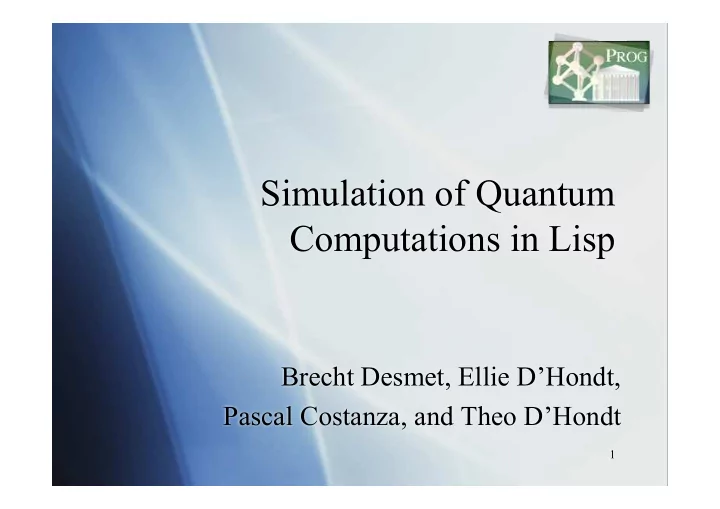

Simulation of Quantum Computations in Lisp Brecht Desmet, Ellie D’Hondt, Pascal Costanza, and Theo D’Hondt 1
Quantum computations Computation below the level of atoms Postulates of quantum mechanics Qubits Superposition Entanglement Measurement Quantum operators Unitary evolution Quantum parallelism Quantum algorithms Shor’s algorithm 2
Quantum Simulator Why? Lack of existing general-purpose machines Perform experiments That go beyond postulates of quantum mechanics Instrument for communication between interdisciplinary research Problem? Simulation on classical machine has an inherently exponential complexity 3
QLisp in a nutshell Simulation as a model Thinking in terms of mathematical concepts Overrule postulates of quantum mechanics Modify quantum states Compact expressive language Macro extension of Lisp Education opportunities Software optimizations Prune time and space complexity for small problems 4
Algorithm of Deutsch-Jozsa (defun deutsch-jozsa (n unitary-fn) "returns T if unitary-fn is constant” (let* ((_phi1_ (make-qureg n (hadamard-init))) (_phi2_ (qc-apply (make-qureg 1 (standard-init 1)) (-h-))) (_psi_ (funcall unitary-fn (tensor-items _phi1_ _phi2_)))) (constant-qureg-p (collapse-basis (qc-apply-range _psi_ -h- 0 (1- n)))))) 5
Questions? 6
Recommend
More recommend